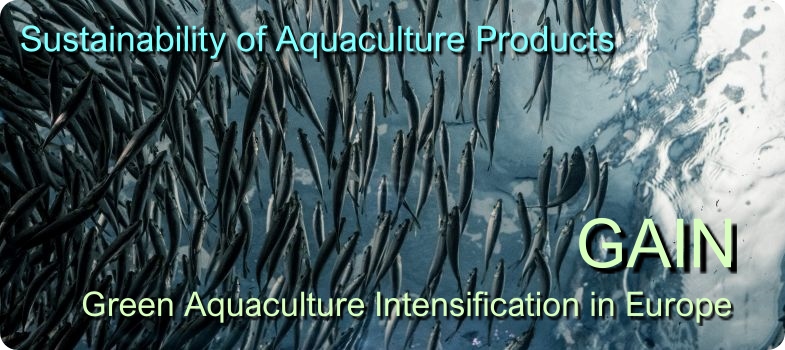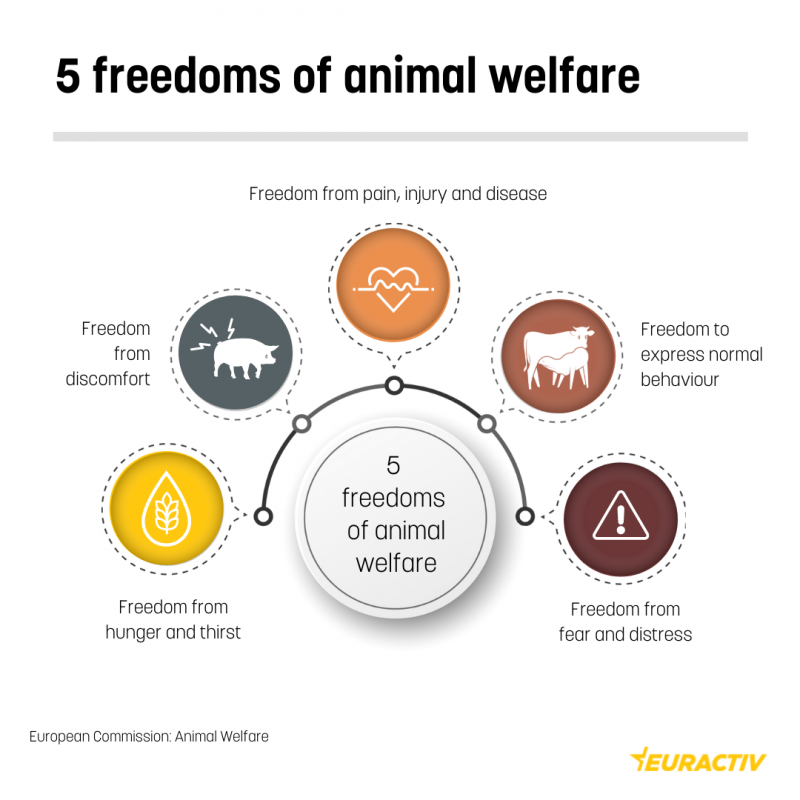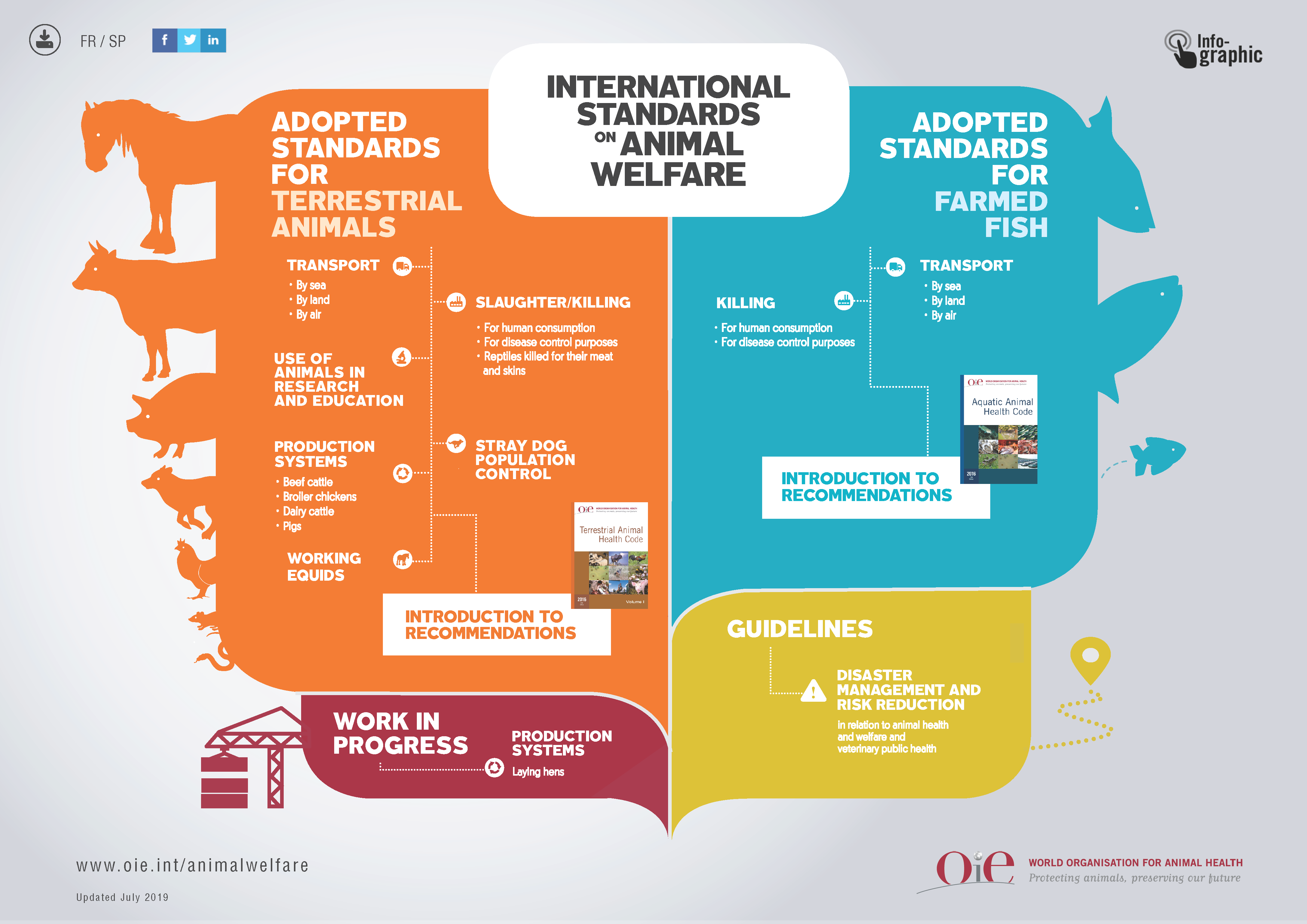Animal welfare
In the following video, Dr Sonia Rey Planellas introduces the principles of animal welfare as they apply to fish.
Fish welfare issues can arise from the 5 domains related to the 5 main basic freedoms defined before during the introduction of the course: freedom from hunger and thirst and this relates to the nutritional domain, freedom from discomfort and that relates to the environment where the animal lives, freedom from pain, injury or disease and this relates to the health status and the way the animals are treated, and the fourth freedom is the freedom to express natural or normal behaviours and this related to the capacity of the fish to express their behavioural needs. The final freedom is related to the emotional domain is the domain that will define the welfare status of the animals, their psychological status: if they are relaxed, content and happy with their living conditions or if they feel fear, anxiety or stress. That final domain will be the one that will define the overall welfare status that we will use during the welfare assessments of fish or other animals we are farming.
Figure 18: The 5 freedoms for animal welfare (source: Euractiv)
Those different freedoms and domains
relate to many issues that have already been explained, for example, the
environmental conditions, type of handling, densities or diets and starvation
protocols. They will also be related to the treatments and other issues that
can cause stress like exposure to predators.
Figure 19. International standards for animal welfare (source: OIE)
In general, for the aquaculture systems, the main environmental parameters to take into account when we look at the welfare of the aquatic organisms we are farming, are mainly related to water quality (WQ) but also we should take into account what can we do for positive welfare: the use of environmental enrichment is very important. In terrestrial animals there is already regulations related to EE and how it must be used to improve the welfare of the animals: use of hen, laying spaces, enough space for the animals, cover, etc. In fish, this has been very poorly developed until now and these are the future aspects that will have to be considered. There is no legislation nowadays regarding environmental enrichment and it is not considered for the certification schemes.
Climate change is already an issue as we know how much of a key parameter temperature is and how it affects all the other WQ parameters. Other WQ parameters that are important are those related to water pollution both chemical and biological.
Another parameter related to the welfare of the farmed fish and crustaceans is the handling and the crowding during handling. This has to be with the health of the animals but also with the fifth domain related to the emotional state of the animals. Handling is a highly stressful procedure for the fish and sometimes the excessive, unnecessary, and sometimes badly done handling can have very negative consequences. It can lead to aggression, external damage and even death by asphyxia during transport and crowding. Netting always needs to be done in small groups of animals and avoid taking the fish out of the water as much as possible. Modern automated systems usually take this into account but still sometimes some sampling crowding and handling has to be done for health checks and growth monitoring. Ideally, handling, transport, crowding and netting the animals should be kept to a minimum and always follow the animals after these procedures and score them for Operational Welfare Indicators like the presence of fin damage for example. Operational Welfare indicators should also be ideally non-invasive for the same reason.
Another welfare issue related to the environmental domain is the stocking density of the animals. Too high or too low can lead to aggression, damage, territoriality or disease transmission, etc. However, stock density is only one influence on welfare, and on its own cannot be used to accurately predict or to control welfare; We also have to consider social interactions, access to food and environment, etc.
Another freedom is the freedom from hunger and thirst that in aquatic animals means free from starvation, being fed species-specific diets and with appropriate feeding methods and being allowed to perform a correct osmoregulatory response. A poor diet can lead to disease and malnutrition (lack of essential nutrients or elements), poor appetite and changes in behaviour leading to stress responses.
Starvation before transport, handling or vaccination can lead to stress and fin damage.
Feeding methods and regimes can affect the social structure of the fish tanks/cages. One point feeding can lead to aggression and hierarchies, dominance and chronic stress. Other methods of feeding: Continuous vs discrete feeding, predicted vs unpredicted etc. have to be adjusted according to the species-specific needs. The same happens with the day and night feeders and that should be considered to allow natural behaviours. Respecting the natural behaviours of the animals like feeding behaviour is one of the key domains related to the welfare of the animals.
Other issues related to the welfare of fish and crustaceans are the treatments that can be excessive or too repetitive or too aggressive and affect different physiological processes. Sometimes depending on the treatments, we can see peaks of mortalities. Farmed fish has no humane endpoints and so sometimes it is difficult to know when too many treatments are too much. There is no clear legislation on that, and this is a very clear welfare concern.
In Scotland for example, standards are enforced by the Scottish Environment Protection Agency (SEPA), which sets site-specific limits on the amount of fish held and the number of medicines and chemicals that can be used. But this refers to the environment but not the fish itself. The same for Marine Scotland that basically prevents introduction and spread of diseases and escapes does but not regulate the fish welfare. RSPCA overviews the welfare of fish according to the EU and council of Europe legislations.

Figure 20. Issues for welfare include stocking densities and exposure to predation (Photos by Sonia Rey Planellas and Jimmy Turnbull)
Finally, exposure to predators is a welfare issue for both the fish and the
predators themselves. Exposure to predators may cause a stress response just by
the sight or smell of them around the ponds or cages. Also, some of the ways of
reducing the predator risk might affect the fish, for example, the noise
produced by some deterrents. Acoustic deterrents can affect the wildlife
around the cages. Some issues related to wild animal welfare are the fish or
crustaceans or other farmed aquatic animals, escapees, via adults, seeds or
larvae. There are risks of introgression with natural native populations, the danger
of introduction of diseases and the potential to become invasive species like
Tilapia for example has become in many non-native countries.


